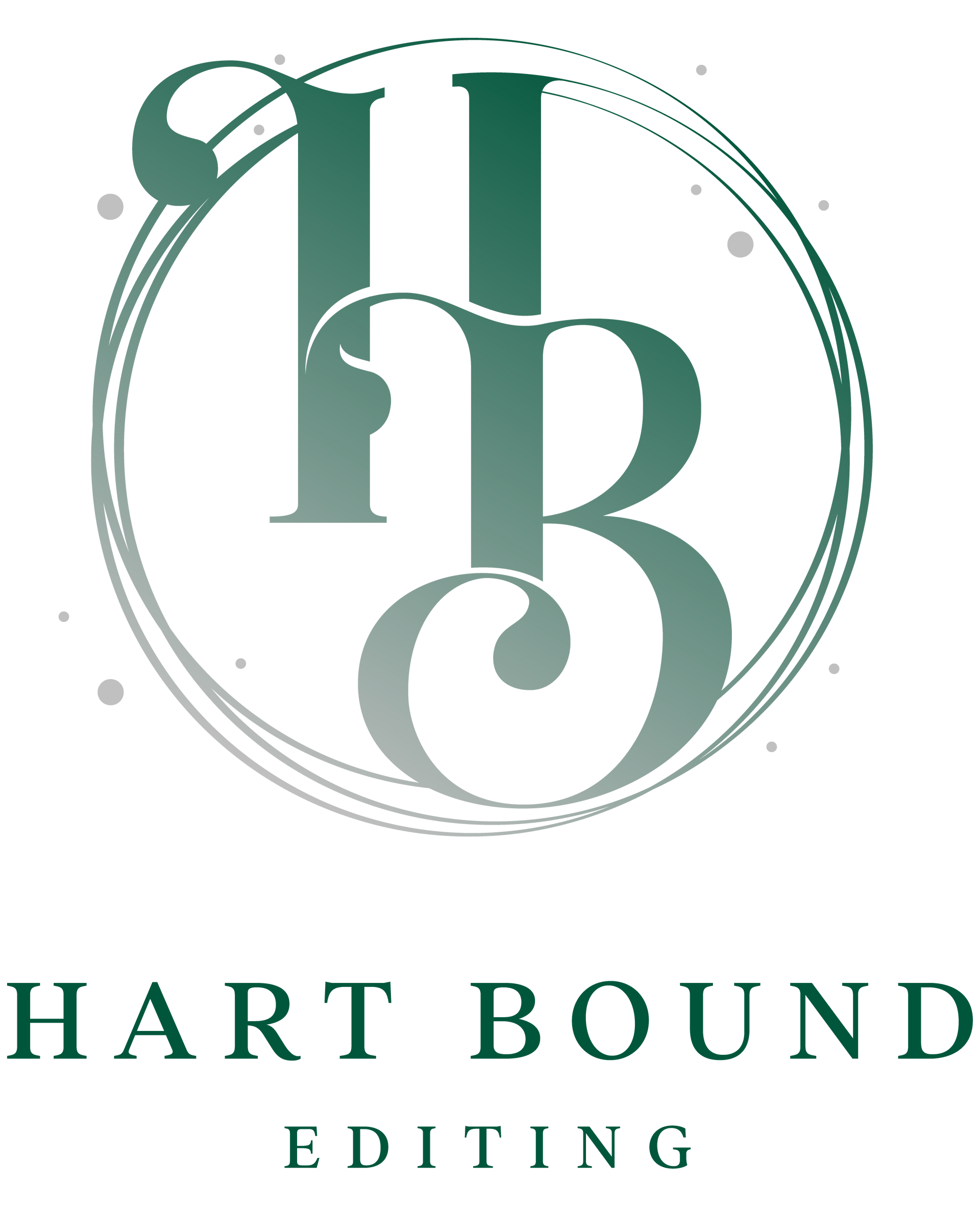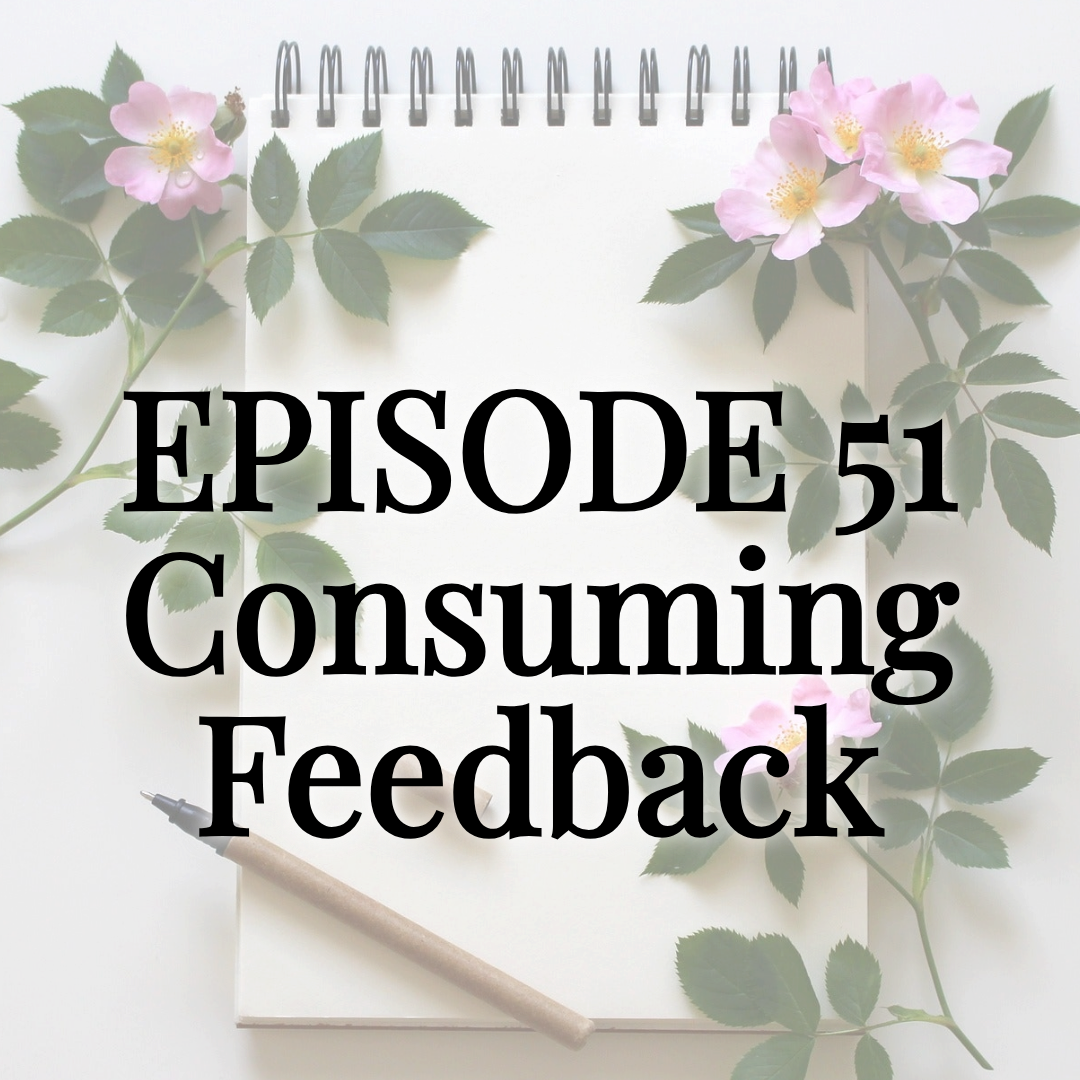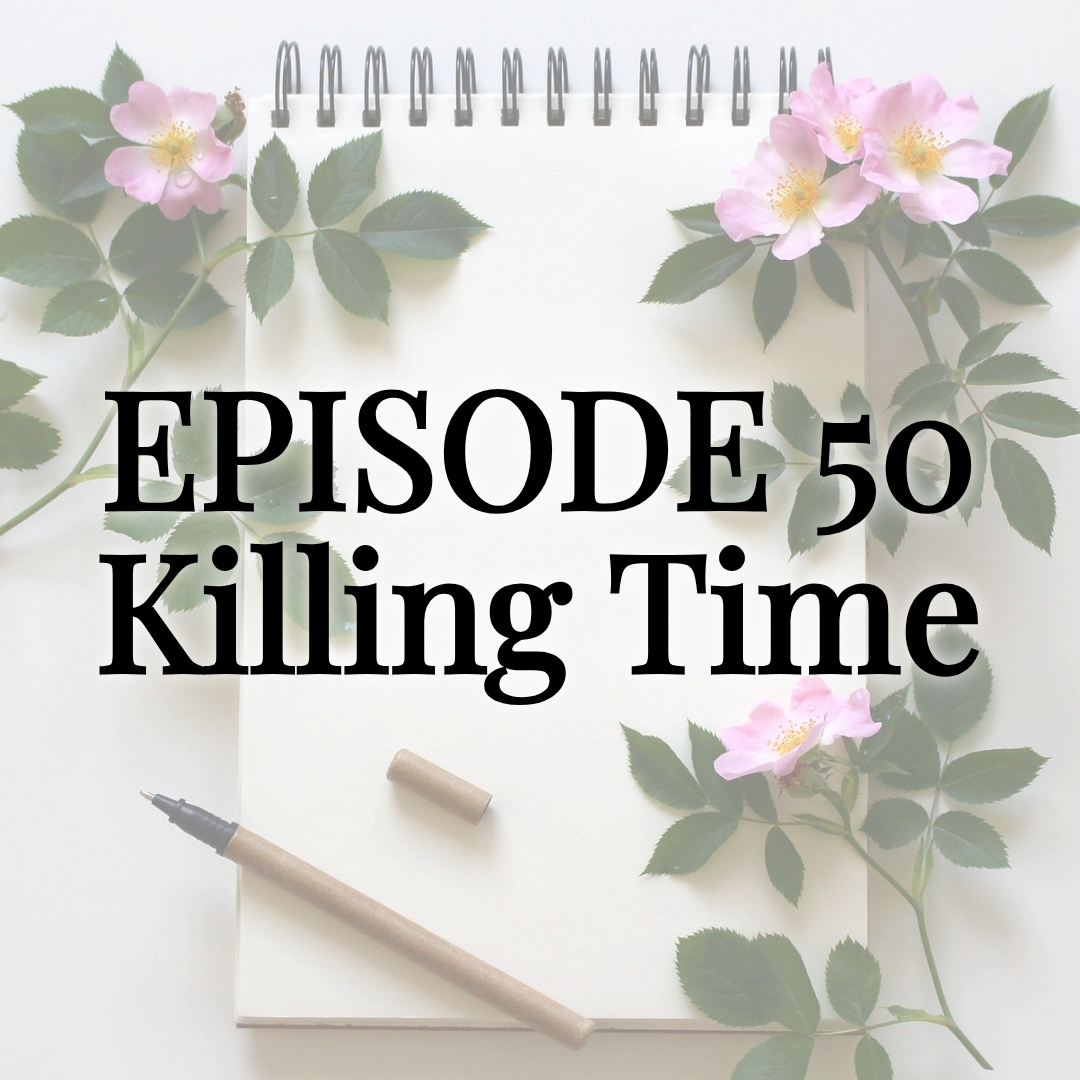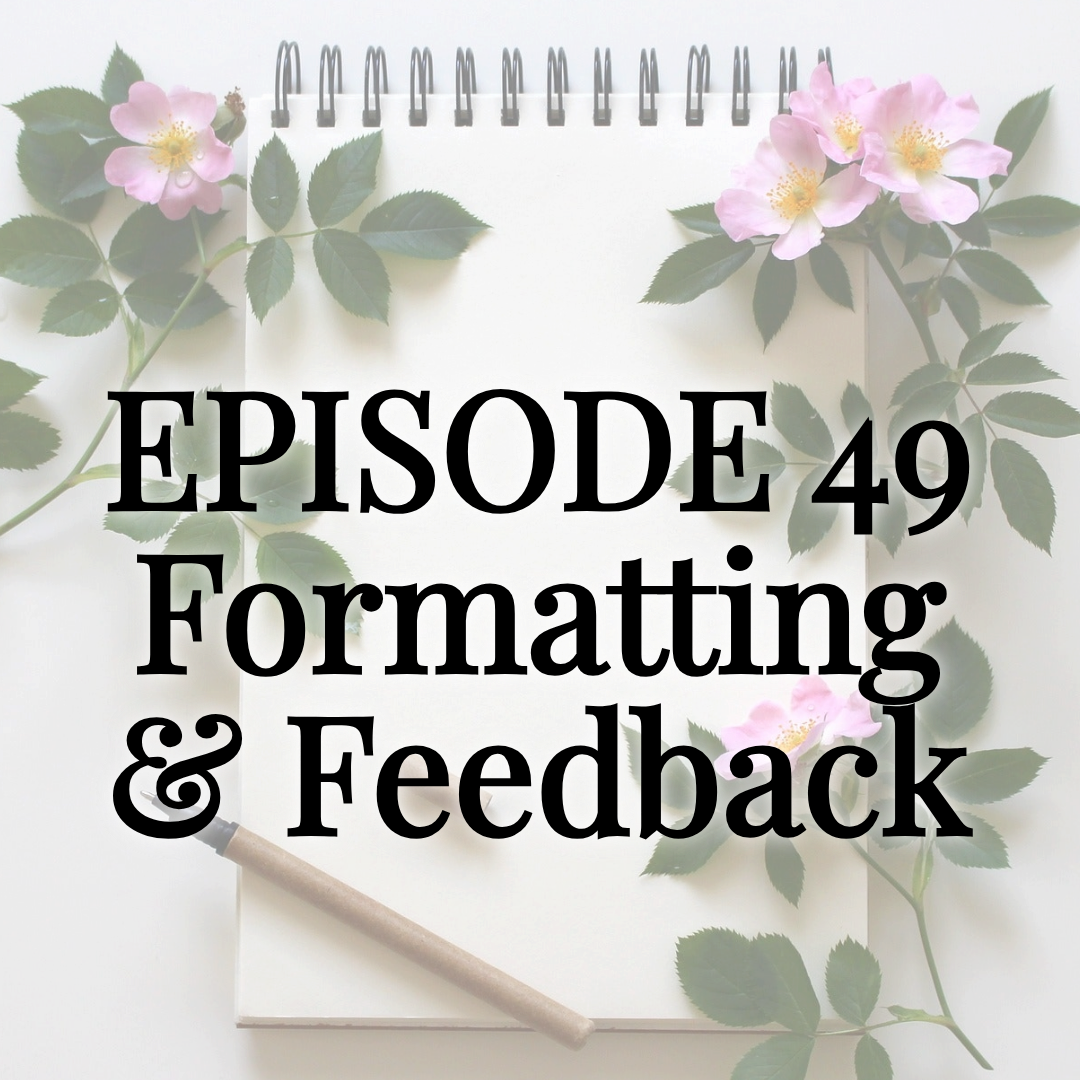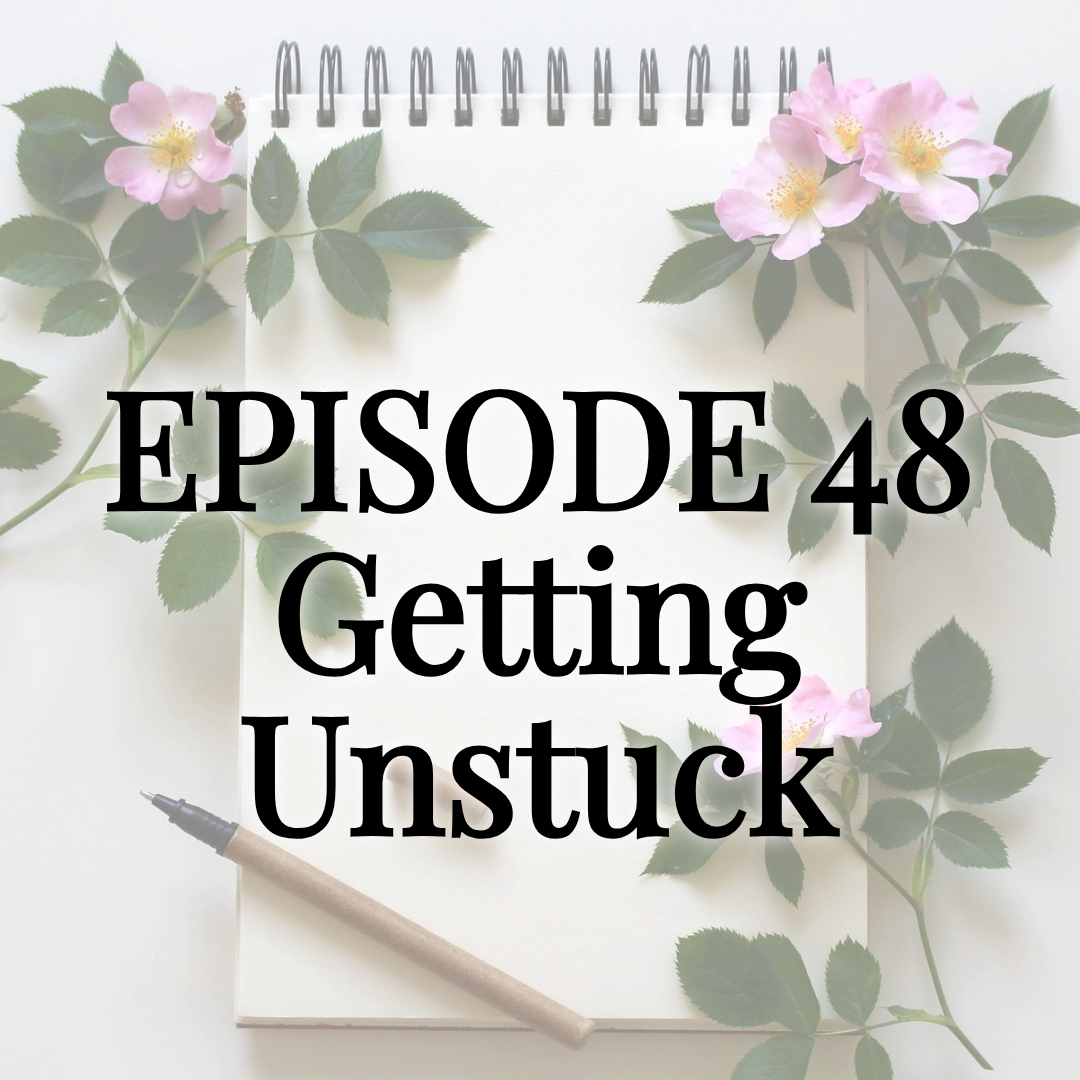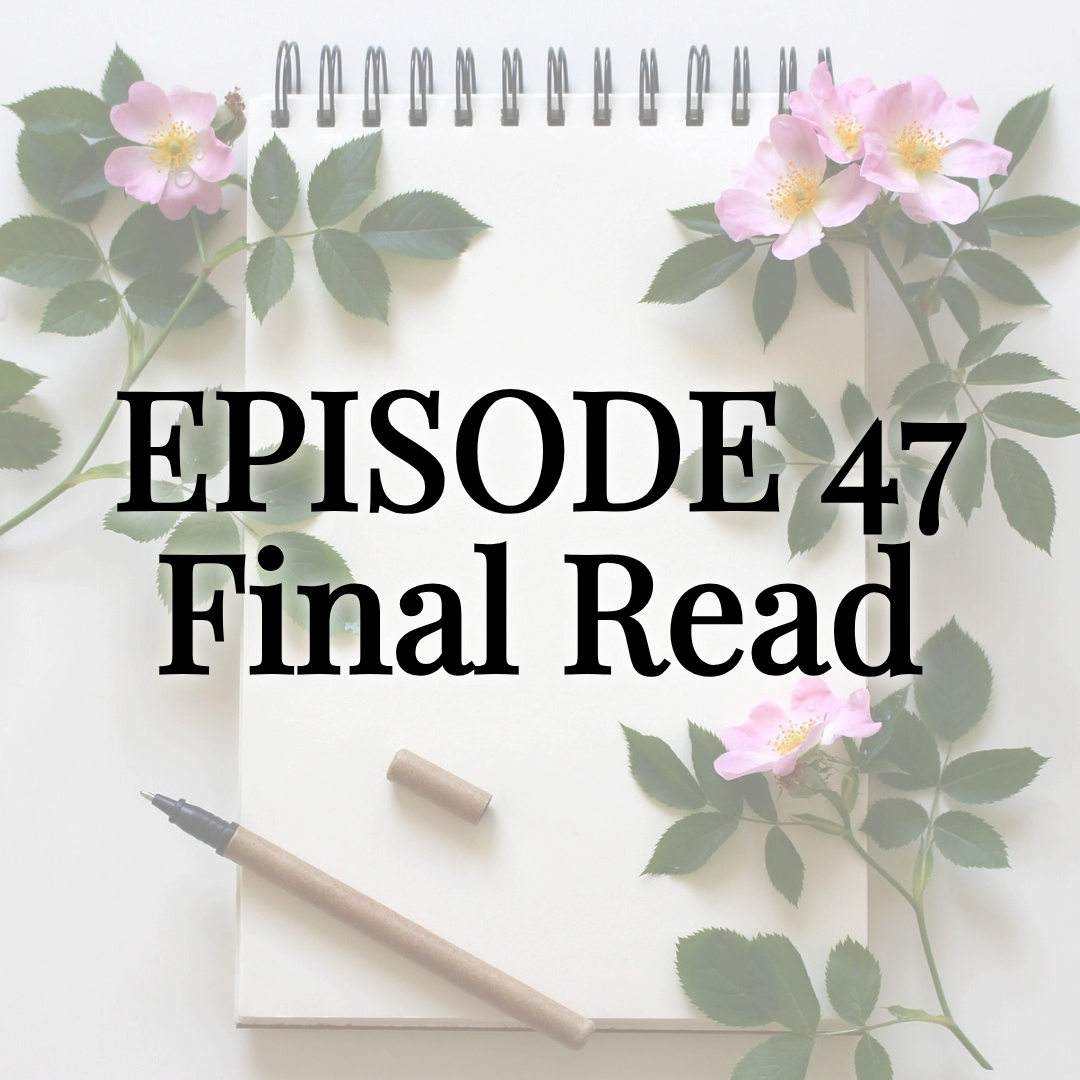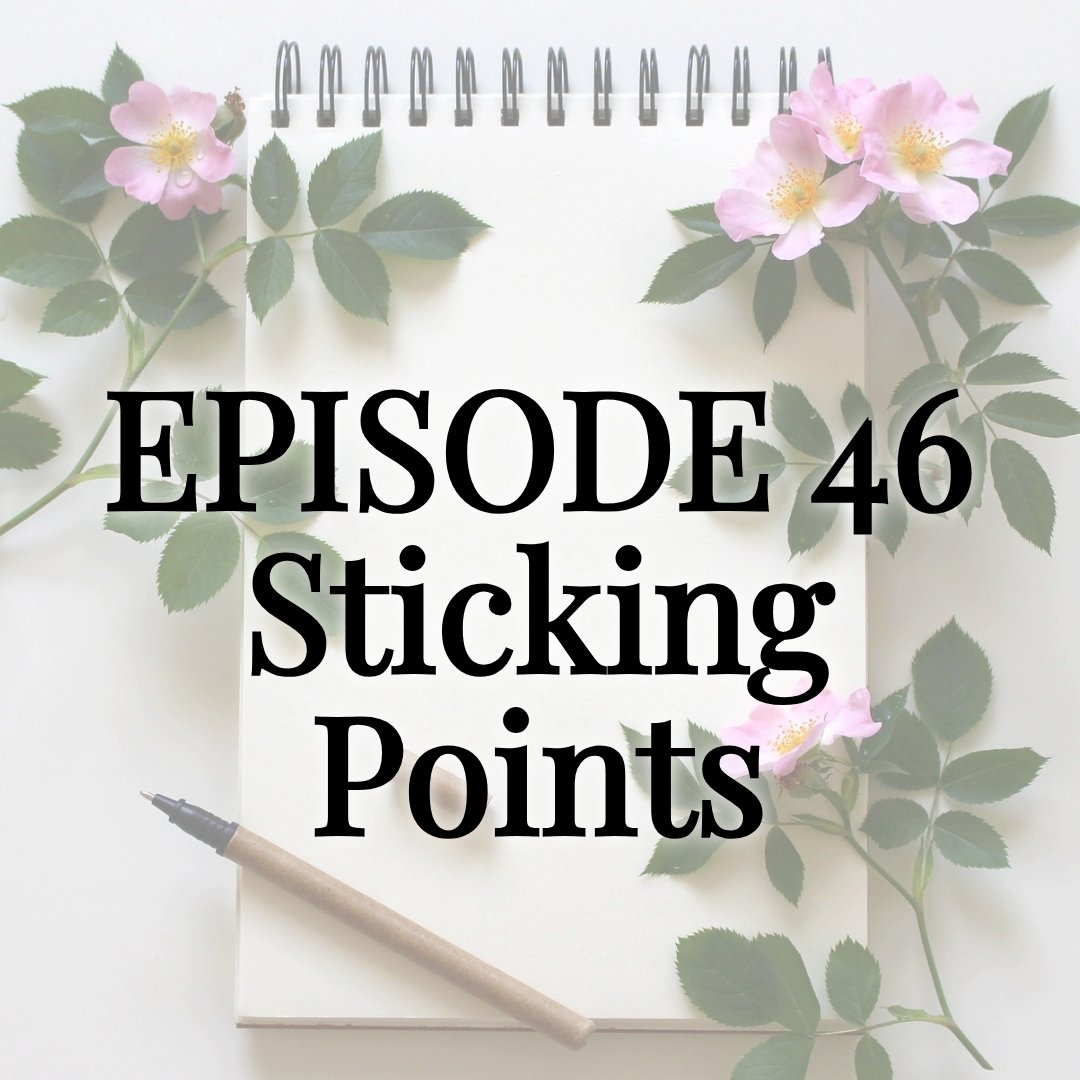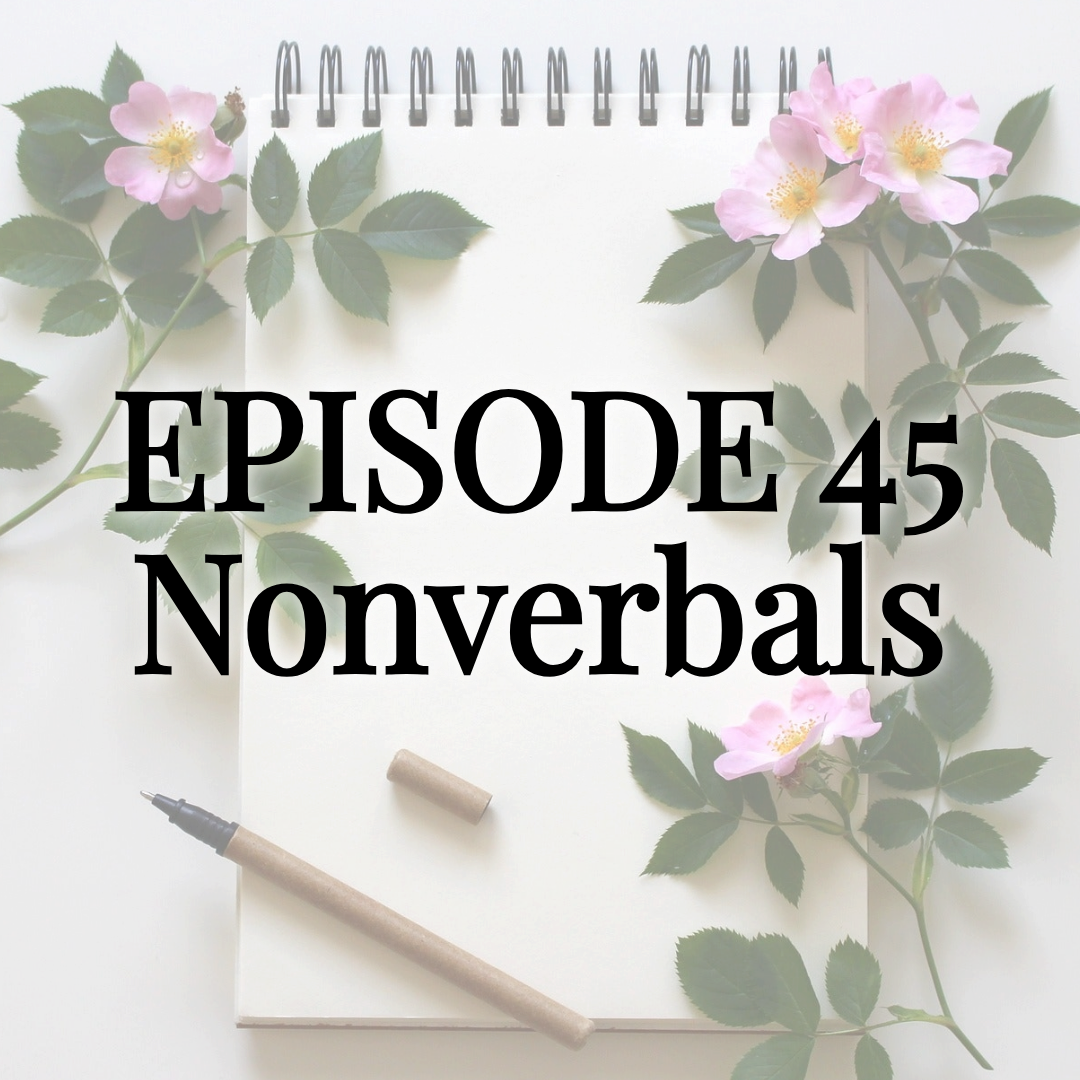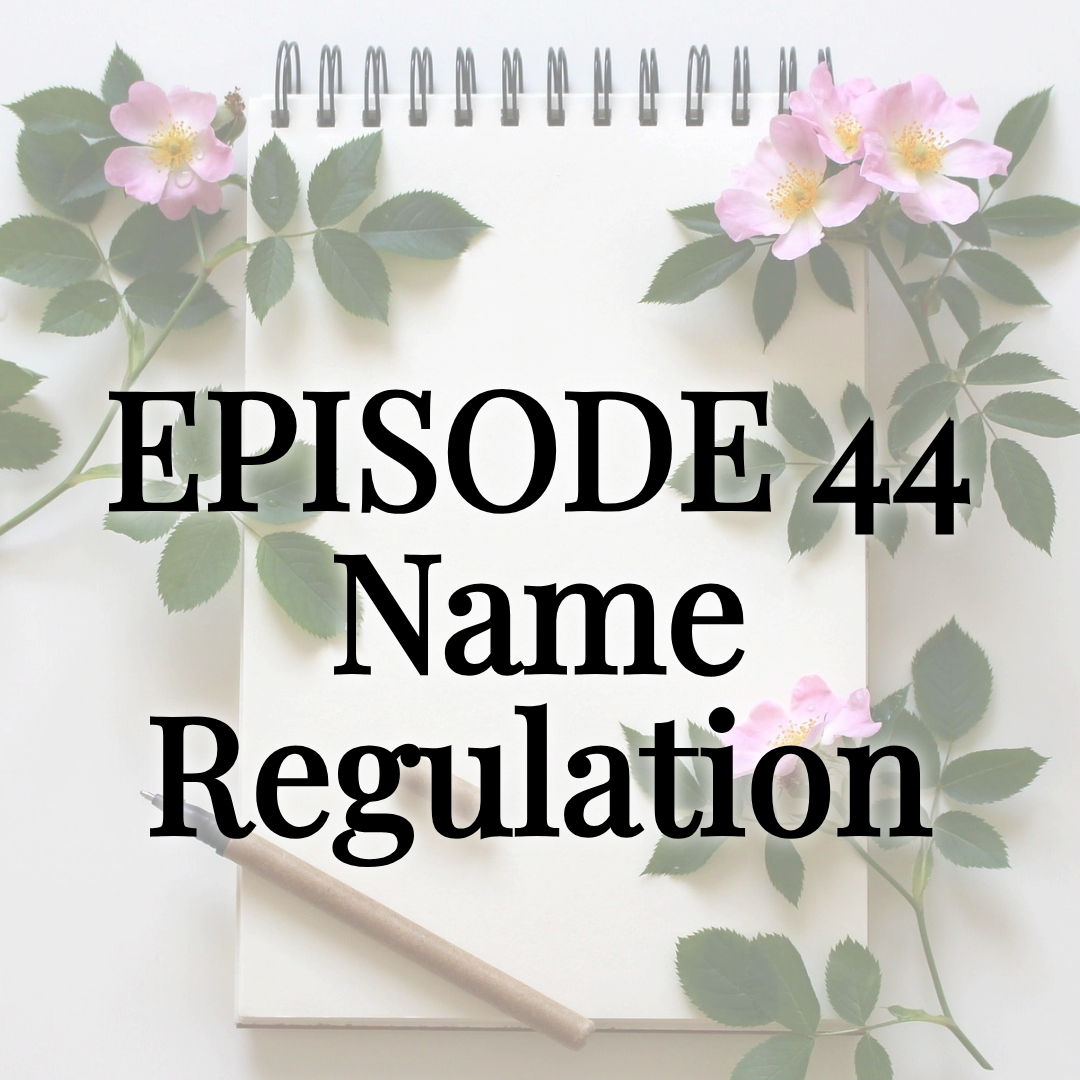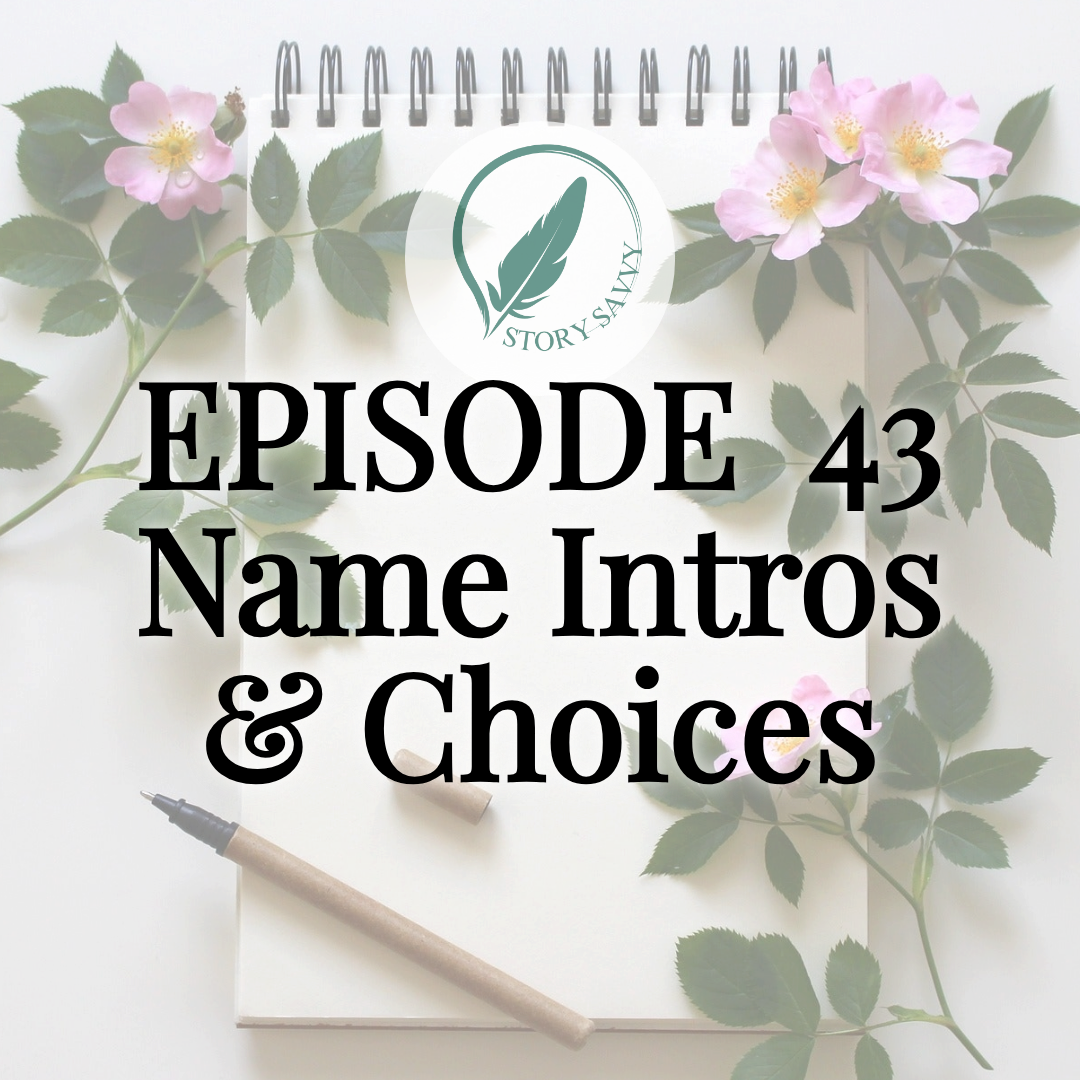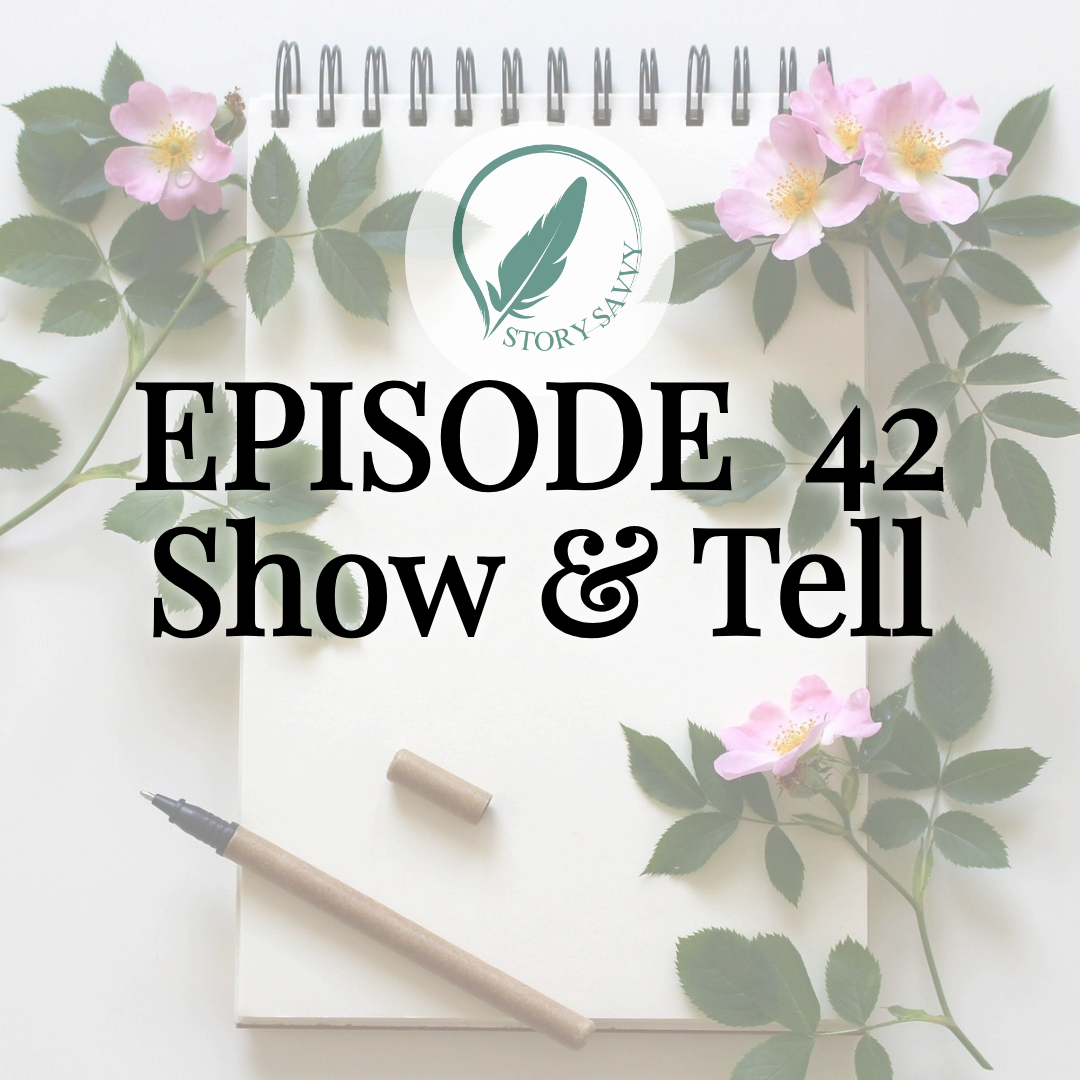Character Arcs & Protagonist Transformations: Story Savvy Self-Editing Episode 10
Character Arcs & Protagonist Transformations After-episode thoughts, overview, and transcript...

Joseph Campbell's Hero's Journey is what I was trying to reference in this episode, but crossed a wire between the original and Shawn Coyne's interpretation of that, which he calls the Heroic Journey. Both are what I would consider staple concepts for fiction writers, but both of those authors come with some personality caveats or warnings. Just to add it to the mix, The Heroine's Journey by Gail Carriger is a third perspective on this topic, and one I thoroughly enjoyed reading.
Happy editing!
Episode 10 Overview:
Character Arcs & Protagonist Transformations
"Does my protagonist change meaningfully through their character arc? Why is that important, and what are common pitfalls?"
Today, Rebecca teaches how to write an interesting protagonist and depict protagonist growth, as we continue our self-editing series on what makes a good writer great! She does an excellent job of revealing how to make your protagonist’s growth feel authentic in this latest episode of the 52-Week Story Savvy series. Rebecca Hartwell, founder of Hart Bound Editing, joins aspiring author Agnes Wolfe from Authors’ Alcove to discuss key storytelling techniques, character development essentials, and common pitfalls, offering expert insights on how to make your story impactful and unforgettable.
This episode explores how to avoid weak character arcs, ensure organic growth, and prevent secondary characters or villains from overshadowing your protagonist. Rebecca shares expert insights on crafting realistic internal transformation, balancing prophecy with character agency, and avoiding the dreaded “plot armor.”
This Episode Covers:
- What Are Common Mistakes in Character Arcs?
- How Can We Tell if the Protagonist Has Grown Enough?
- How Do We Show That Character Growth Is Earned?
- How Do We Avoid Rushed or Forced Character Growth?
- What if a Secondary Character’s Arc Overshadows the Protagonist?
- How Can We Avoid Making Things Too Easy for the Protagonist?
- How Do We Prevent a Character Arc from Feeling Formulaic?
- How Do We Balance Prophecy and Character Growth?
Whether you’re in the early brainstorming stages or deep in revisions, these tips will help you craft a protagonist that feels real, relatable, and unforgettable.
Recommended Resources:
- Story Grid – [https://storygrid.com]
- Authors’ Alcove Membership Site – [http://authorsalcove.com]
- Book Giveaway – [http://authorsalcove.org]
See you next week for episode 11: Creating an Effective Antagonist
Episode 10 Transcript:
Character Arcs & Protagonist Transformations
Rebecca Hartwell: Hello and welcome to the Hart Bound Editing Podcast. This is Episode 10 of the weekly Story Savvy series, where we tackle the 52 biggest self-editing topics and tips to help you make your good story great, as an aspiring author asks me, a developmental editor, all of the questions that you've wanted to.
We have covered a bunch of topics in this series so far, including last week's episode on delivering payoff and catharsis in the global climax and resolution of a story.
Today, we are going to really focus on character over plot for the first time by itself and how to create strong character change arcs for them through the story. By the end of this episode, the hope is that you will feel confident in identifying what sort of arc you want for your main character and how to make sure that it works well for your readers.
Joining me today to ask all of the questions that you've wanted to is my friend and co-host, Agnes Wolfe.
Agnes Wolfe: Hi, I am an aspiring fantasy author, Agnes Wolfe, who hopes to release her first middle-grade fantasy later this year and also host and founder of Authors' Alcove. I'm here today to dive into defining or refining better character arcs for our protagonists.
All right, so let's start off. I'm going to start off with, I think, a big question: What is the biggest blind spot or mistake that you see as an editor that writers have when creating their character arcs?
Rebecca: Mostly that they don't go deep enough, and this can appear in a couple of different ways.
So, one way that I see authors make this mistake is that they take the concept of a character arc far too surface-level. Like the change arc is in the protagonist's situation, or title, or the tools that they have, and not a change arc around who they are as a person, or their mindset or worldview around the core issue of that story.
The other way that I see this mistake come up is that the author creates the character as they want that protagonist to be right off the bat and then faces resistance as the author writing the story to give them a meaningful arc from that point.
So, to fix it from that perspective, I often end up giving feedback that the author can either start off their protagonist in a worse-off position so that the place where they want the protagonist to be is the end goal, and you have that change arc to get there, or simply push their imagination to see: "All right, well, this is where I'm starting the character. How could I actually make it even better? How can I let them grow into more of who I want them to be over the span of that story?"
Agnes: So how do we know if our main character has grown enough through their crisis for it to pay off in the climax, like we talked about in the last episode?
Rebecca: Yes, so we did go over that a little bit in Episode 9, so if people are still wondering about that, I suggest you go back and listen to that again.
There's a question that you can ask yourself here, which is: "Could the protagonist function the same way in the climax if they were dropped into it as their Chapter 1 selves?" Which I talked about this in the last episode.
If the answer is no, they would not survive that—if the climax would go very differently because they hadn't been through that story yet, if they hadn't been pushed to change yet—then you probably have a meaningful arc change, and you're fine.
If the climax would largely go the same way, if that wouldn't make a huge difference to the story, or if they could cope with it about as well as they do having gone through the story as they would in Chapter 1, then you may have not forced them to change enough or gone through enough of a journey for them.
Agnes: So how can I help my reader see that the growth in my protagonist is earned?
Rebecca: Yeah, so the last question and answer pretty much cover this, but again, I will add on to that.
What does the Dark Night for your protagonist look like? If you're familiar with—I think it's Campbell's theory of the Heroic Journey—then the Dark Night is this part, usually in the early second half of a story, where the character kind of has to reckon with the mistakes that they've been making or their flaws. They have to do some introspection and come to their better selves through that process. So, what does your Dark Night look like? What mistakes did your protagonist make? What bridges did they burn, or what wrong person did they trust in? To answer all of this, ideally, what led to their global crisis? And then from there, have they since owned up to that mistake, or made amends, or fixed their mindset around that thing, whatever is applicable to their situation in their arc? And then from there, you can kind of gauge, depending on your answers, if they've earned it then they made a mistake and they made amends for it, or whatever that calculation is for you.
If they made a sacrifice in doing so, that can be another level of earning that. And that sacrifice—the price of that sacrifice—can be as little as humility and shame or hurting one's own pride, as you have to do to make apologies, that sort of stuff.
Cognitive dissonance can be used if you have really low stakes, but if it's higher stakes, it needs to actually be like, "Oh, I'm giving away a lot of my wealth," or "I'm sacrificing my own safety," that sort of thing. If those different aspects are in the mix, then it's very likely that the reader will feel that the change was earned.
The clearest example of this is in romance, where these elements—sorry, these ingredients in the formula—are very much core conventions of the genre. The global crisis is the breakup between the lovers, their character arc is to earn their happily ever after by realizing that they were wrong to do that breakup or whatever came between them. And the climax example of their pivotal choice is to try to make things right with the other lover in the grand gesture or proof of love, which should contain some form of sacrifice or basically just giving of oneself without expecting to get anything in return so that it's selfless.
Other genres are less picky about exactly what character arc is expected or how to earn it, but it's worth thinking about in regards to your comp books—so the books similar to yours that you're reading and studying (hopefully doing this throughout the process or building up to it) —and in looking at that, consider how you can both nail a beloved trope within your genre as well as make it a little bit fresh and unique to your protagonist and your story.
Agnes: So, I know when I did my first round of edits, one thing that I realized is that my main character's growth was a little bit too rushed.
How can I make sure that my protagonist's growth isn't rushed or forced? And if we recognize in our own writing that it does seem like one of those things, what are tips to help it seem more organic?
Rebecca: So, I'll start off by saying that this is a pretty common thing that I see, with (particularly newer) authors, and it's something that practice will help perfect.
But in regards to how you can adjust that, or if you know that it's an issue how you can see where and how to fix that, try asking yourself: In what moments in the story, or interactions between the protagonist and other characters, could you tweak or add little things in to explain a more gradual transition of that change?
So, to break this process down a little bit further, I recommend that you start out by naming: The starting point for that character arc. The lowest point that forces them to see how they need to change like I just talked about with the Dark Night, that is often the Dark Night. And then the end point for that character arc that you're aiming to get them to by the end of the story, or the climax, or wherever that really needs to paid off. The pinnacle of it.
The next step after that would be to plan out a number of progressive escalations between those three markers. So, between starting and middle and between middle and end. That's either going to be progressively getting worse, or doubling down on the flaw, whatever that negative aspect of the character arc is, ideally that’s the arc between the beginning and middle), or progressively getting better (so, changing and learning to be their better selves, ideally between the midpoint or that Dark Night and their ending point for their arc).
I personally suggest a minimum of three connecting dots between those markers. But if you really want to go whole hog with this, then you can try to find a little progressive moment in every single chapter. That's very much up to you. But I don't think you should obsess on this to the point of getting overwhelmed. So, three connecting dots between the major moments is a good starting point.
Once you have those progressive escalations planned out, the first point that I want to make in how you approach this is: the point of building it is that they are progressive escalations so that you can do it in a natural, sort of like, step-by-step. If you think about it like a staircase, you walk up each step to get to the next landing rather than jumping. Some people do that, but for the purposes of the story, try to take it up one step at a time to get your readers to follow this journey and make it feel natural and gradual in this buildup over time.
The second point I want to make here is that it doesn't have to be a straight line in either direction. It doesn't have to be walking right up that staircase or walking right down it if it's a negative progression. The phrase two steps forward, one step back is ideal, actually, for maximum effect so that you can show that it's very human. It's very natural to have some progress and then have a setback, or to have some setbacks and a little bit of progress. So, bearing that in mind is definitely going to be helpful.
The third point here is: make sure that you are showing rewards or costs for each of these moments for the protagonist, these progressive moments in their arc. It can be subtle. It can be so subtle in the small moments. But you do want it to be a little more noticeable or overt in the big moments.
This can get tricky and vary widely from book to book, but as a very general rule of thumb: if the protagonist makes a positive step on their arc (so moving in the direction you want them to go towards that end point), then you want to reward them for it.
And again, this can be anything like, just a little bit of pride, or a little extra resource, or calmness, or connection, or whatever positive trait you can show that oh, well, they chose to—going back to an example I used in an earlier episode: If they choose to call out their drunk uncle instead of staying quiet and sacrificing their agency in that moment, then they get rewarded by—let’s say—a cousin just saying: "Oh, thank you so much for doing that. I hate having to deal with him, and I'm so glad someone called him out." That's a reward.
On the other side of that, when your protagonist makes a negative step—so doubling down on their flaw or choosing wrong rather than choosing right in a direction that would make them a better person—you want to punish them in some small way. Again, cognitive dissonance, shame, loss of an ally, whatever that happens to be and fits for your story.
But I do want to add the caveat that you can play with this. This is a rule, and this is a rule that I think can be broken very, very effectively. If you want your protagonist to go down a darker path, if you want them to have a really dark double-down on their worst traits before they get better, then rewarding them for those bad choices, that’s going to push them down that line. And that can be used really effectively and in really fun ways, as long as you're aware of it and you understand that the reader is going to subconsciously pick up on: "Oh, this behavior is being rewarded," and possibly misunderstand things around that if it's behavior that you don't actually want to be rewarded. I hope that makes sense.
Agnes: Yeah. And I think that breaking that rule is better for adult audiences rather than my middle-grade work, where middle-grade really needs that consequence because they're still learning the consequences of life. So, yeah, I think that was very interesting. Thank you for sharing that.
So, I know this is something that I struggle with a little bit, is: what happens if a secondary character's arc or the villain's arc is stronger than the protagonist’s and overshadows the character arc of our main protagonist?
Rebecca: Yes! This was definitely something that we talked about a lot in the developmental edit that I did on your book. So, happy to kind of share this with the audience at this point.
As I've said before, your protagonist isn’t going to come across as the protagonist if they’re being overshadowed.
This will likely leave readers feeling like the story is poorly written, or like they don’t like the protagonist (which can be a big problem for people just liking or connecting with the book), or like they never really figured out what the story was actually trying to be about beneath the surface.
So, there are three basic solutions to this issue of a secondary character overshadowing the protagonist:
The first is: you can make your protagonist's change arc stronger and deeper until it has gotten bigger and now overshadows that other secondary character one that you’re concerned about. So that’s option 1.
Option 2 is: you can take that character arc that’s so strong and so interesting away from that secondary character and instead put it onto your protagonist. Basically, take those actions, and that internal journey, and changing who in the story has those thoughts, and does those actions, and goes on that journey into your protagonist.
Option 3 is: make that secondary character your protagonist. This can definitely be the most daunting option, especially if you’re writing a story where the POV matters and you generally want to be in your protagonist's POV. But it can absolutely be the difference between a story being mediocre and being a best-selling masterwork. That line can be deciding, “Oh, this character is actually the protagonist. I'm going to change the whole story around that to show that this is actually where the story is anchored.”
Agnes: I think that's definitely something that I had to think about when writing mine because I had two main protagonists, and—I know this sounds weird—but I actually prefer my secondary protagonist. And so, he's going to have quite the story arc in the second book, but I still have to make sure that she still carries it in both books as well because I do want a female main protagonist. So that has actually been a struggle of mine. And maybe, partly, I think sometimes it's because I identify with men more. I've always identified with men more, and boys. I had all male cousins, except for one female cousin. I have three brothers. So, for me, I always—growing up, I struggled with female friendships. And so for me, I do identify a little bit more with the male, even though I am a female.
Rebecca: I actually identify with that so much. And in my own work, that's part of why I write dual POV, is I want to be in my main male character's head half the time. So, I totally hear you.
Agnes: That’s interesting. Anyway, back to the questions.
This is something I've especially seen in middle-grade writing, but I feel like one of the things that I often see mocked about some popular works, like, even Harry Potter, is that things are too convenient for the main character. And I think this is probably mostly more so for middle grade, but I do also see it in, like, you know, maybe ACOTAR might have some of this. But yeah, I was looking at that just a second ago. So, what are some questions we can ask to make sure that we don’t fall into this pitfall of making things too convenient?
Rebecca: Sure!
So, plot armor, as I’ve seen that called, or generally making things too easy or too lucky, can definitely be overused. And I think part of why that comes up most in middle grade and YA is because those are the genres where you have the most leeway to use that. Where that is perhaps expected to some extent, and people will be given an inch and take a mile, so to speak.
So, let’s see. The issue with this problem, or this common complaint, has several different aspects, that I’ll try to go into here.
First: Readers want to see how the protagonist is going to deal with knotty situations, or hurdles, or difficult situations. And the reader can feel cheated when those situations just keep getting dodged or just happen to work out.
Second: We all know inherently that meaningful internal change often comes from adversity. So, tension, and conflict, and overcoming hurdles. Trying to force a character arc that’s lacking meaningful tension and conflict can make that feel unearned, which we talked about earlier in this episode.
Third, too much luck or convenience can make the author’s choices too present or noticeable in the story. Like I’d given you feedback on in your story with your protagonist, it can feel like the author is flinching away from actually bumping their characters up against anything meaningful.
But along with goals, tension and conflict are the primary driving factors with many, many stories. With most of them, I would say. So, too much luck and convenience can seriously hurt that momentum.
So, going off of that, I will give you a short list of questions that you can hopefully ask yourself to check if this is an issue in your work, and hopefully fix it.
Number one, at the global level, so looking at the full story together, where does your brain automatically go when you think about spots where things might be too convenient? And this is just a gut check, basically.
Second, ask yourself the same question about where do you just notice these issues at the sequence level. So that’s any set of scenes that accomplish one thing, at the act level, at the individual chapter level, whatever you want to do. Just jot these down. Make a list of where you think these things are happening.
Then, look at each moment that you have on your list here, and ask yourself: How badly could that moment could possibly have gone within your established worldbuilding. For example, let’s say in the moment you are looking at, your protagonist is shunned out of their village for something. But a kind passerby, who just happens to be wandering by and sees them, offers that this protagonist can come and live with them instead. Perhaps the worst possible way that that could go instead when you’re doing this brainstorming is that the protagonist gets caught in a storm outside overnight, and dies in the cold from exposure. Or perhaps the person who’s home they end up going to isa serial killer, or something awful like that.
So, now that you have these two extremes: you have too convenient and you have the story ends here. Now, like we’ve talked about before in connecting the dots in the character arc, what you want to do now is brainstorm 3 to let’s say 10-ish (this is not important) levels of “badness” between ‘too convenient’ and ‘the story ends here’ that could hit different levels so that you have options across a spectrum here, basically.
So, from that list of best to worst, then pick one that is both appropriate to your genre, you’re your audience, and fits the kind of story that you’re writing ideally won’t require you to rewrite more of the story than you’re willing to at that point
So, for example, in the same scenario that we were just talking about, perhaps the protagonist, instead of immediately getting into someone's perfectly nice guest bedroom, they have to wander alone for a day or two, getting dirty, and hungry, and sore before a gruff (not friendly) passerby takes begrudging pity on them and puts them up in the barn rather than a fluffy bed in the house like you'd originally written.
Basically, things don’t have to go badly and stay bad to fix these too much convenience issues and luck issues. But replacing that convenience with just a little bit more desperation and need and lessening that luck by degrees can do wonders for your reader investment and your momentum.
Agnes: So, what are some ways we can be sure that the character growth arc doesn’t appear to be formulaic? Especially because I know a lot of fantasy writers follow the traditional Hero’s Journey.
Rebecca: Well, first of all—and I've said this before, I’ll say it again—formulaic isn’t necessarily as bad of a thing as many authors seem to think. Especially as a newer author, and especially in genre fiction, those clichés, and tropes, and formulas are what makes it that genre. And people go looking for those specific genres and those specific sub-genres because they want to consume more of that formula.
The best metaphor I’ve found for this is to think about your favorite food. Let’s say it’s chicken quesadillas. Just because there’s a certain formula that makes a dish a chicken quesadilla doesn’t mean you aren’t potentially going to spend your entire life loving and repeatedly consuming chicken quesadillas. Because you like it. And that formula is why you like it. So, thinking about that in fiction can be helpful and reassuring, hopefully.
Moving on from that, I’ll say that this is another reason you need to know your genre well. And to know when you are or aren’t being formulaic. And ideally, if you really want to go deep with your research, what aspects are tropes, and conventions, or expectations of the genre, and what aspects are just overdone?
This can be tricky, so again, don’t overstress on this. But to answer the question specifically, so, how do you avoid being formulaic? You do this by iteratively brainstorming. I've mentioned this process before, but it’s a great skill to build in yourself for just about everything around self-editing.
So, you do this by—you start writing down the first idea that you have. Or in this case, if you’re self-editing, the current aspect of a character arc that you’re worried about being too formulaic. You just write that down. And then without putting in too much thought—this should be a ‘get things flowing’ exercise—bang out 10 to 50 (however many you want to do) further ideas that might work. If one idea seems particularly awesome, if you write something where you’re like “ooh, I’m so proud of that,” then absolutely just keep iterating on that and see how many different versions of it you can come up with until that juice runs out. Then go back to your basic list.
Once you have that list, step away from it for a little bit. Be that minutes, or weeks, or whatever time you think is going to be most helpful to you or fits the space you have to work on this. And when you come back to it with slightly fresher eyes, pick a favorite, and refine that until it works. Basically, the first ideas are almost always going to be more formulaic and unoriginal than the tenth or thirty-fourth that you have. Because that’s your subconscious is just going: "Oh, well, I’ve seen this done before. I’ll just slap that in there." But if you keep going down that chain, your own creativity and your uniqueness is far more likely to come through. So, just getting further down that brainstorming list often does the trick to get you out of that formulaic space.
Agnes: So, I know we need to wrap up here, but I did want to ask one last question.
I know in my own book, it has a prophecy. How can we be sure that we show a character growth in our protagonist rather than just fulfilling some sort of destiny they have?
Rebecca: Let’s see. I think I’d suggest addressing this in one of two ways.
The first option is to have the prophecy be about who that character will become by the end. And then start their arc at the beginning of the book as a version of themselves that still needs to change, and grow, and learn into the version that the prophecy is about.
The second option there is to keep the prophecy vague enough that it doesn’t constrict that character arc too much. Or so that you can twist it. And this is general advice about using prophecies as you’ve hopefully seen in movies, TV shows, and books over so many different examples.
I have personally used prophecies in my own books, and I have had so much fun using twist wording or homophonic names that sound like other words to keep my characters off balance about what those prophecies are going to be about and how they’re going to come true which prevents those characters from then consciously changing themselves just to fit the expectations of the prophecy.
So, it's very much something that you can play with.
Rebecca: So, I would love to ask you at this point: having gone through all of your developmental feedback on this—like we’d gone over in the bonus episode I posted a couple of days ago—how are you feeling about your primary protagonist, so, we’ll say Emilia’s, character arc across this first book?
Agnes: That has actually been the biggest thing I know I struggle with. I know what I want her character arc to be. I’m just not sure I’m actually portraying it the way that I want it to be. So that’s essentially where I am right now, is making sure that my vision of her character arc is actually coming across. And I think, for me, a lot of it was the point of view. That’s probably 95% of my problem right now.
Rebecca: Yes! And I’m glad you mentioned that because we’ll mention that in the podcast here, of being inside a character’s head is going to help a lot with delivering their arc.
Agnes: Anyway, I just want to thank you so much for your insight. It has helped me so much. I really appreciate it.
Rebecca: You’re very welcome!
Next week, we will go over: What makes for a good antagonist, so the opposite of your protagonist here. Or not necessarily a personified antagonist, maybe a force of antagonism. We will go into details around that, and how those need to connect with and contrast the protagonist’s arc.
For now, I would really like to thank everyone following along with this Story Savvy series. You can really help us out by liking and subscribing to The Hart Bound Editing Podcast and The Authors’ Alcove Podcast where you can find lots more content for fantasy authors and readers beyond this joint series.
Agnes: I can’t wait to chat with you again next week! Bye!
Rebecca: Thank you so much for listening to The Hart Bound Editing Podcast! I look forward to bringing you more content to help you make your good story great so it can change lives and change your world. Follow along to hear more, or visit my website linked in the description)to learn how I can help you and your story flourish.
See you next time!
